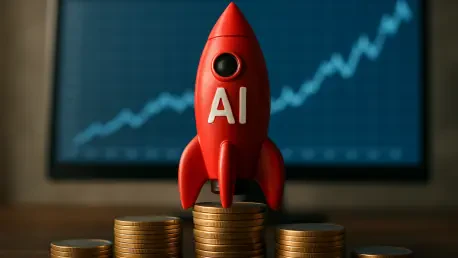In a financial landscape buzzing with innovation, the rapid rise of artificial intelligence has sparked both unprecedented excitement and significant concern among industry leaders. David Solomon, the CEO of Goldman Sachs, recently shared a sobering perspective in a prominent interview, cautioning that the current enthusiasm surrounding AI and other emerging technologies might be inflating equity markets to unsustainable levels. His warning points to a potential drawdown within the next 12 to 24 months, driven by speculative bubbles reminiscent of past tech booms. Solomon’s analysis draws attention to the historical tendency of markets to overreact to disruptive innovations before a correction sets in, as investors grapple with uncertainty over which companies will thrive and which will falter. This cautionary outlook serves as a reminder that while technological advancements can drive capital formation and growth, they often come with heightened risks of volatility as market expectations outpace realistic outcomes. The parallel to previous cycles underscores a critical need for tempered optimism in the face of rapid change.
Navigating Market Cycles and Economic Optimism
Despite the bearish short-term view on equity markets, Solomon expressed confidence in the broader trajectory of the U.S. economy looking toward 2026. He highlighted several supportive factors, including evolving trade policies, ongoing government stimulus, and robust investments in technology, all of which are poised to create a favorable environment for sustained growth. This duality in his forecast—caution regarding near-term market corrections paired with optimism for medium-term economic strength—offers a nuanced perspective on the financial landscape. Solomon’s insights reflect an understanding of cyclical market behavior, particularly how disruptive innovations like AI can trigger both excitement and instability. By drawing parallels to the dot-com era, where only a handful of companies emerged as winners, his analysis emphasized the importance of discerning true value amid hype. Looking back, his balanced viewpoint provided a clear framework for understanding the complexities of market dynamics, urging stakeholders to brace for potential challenges while recognizing the enduring potential for economic progress.









